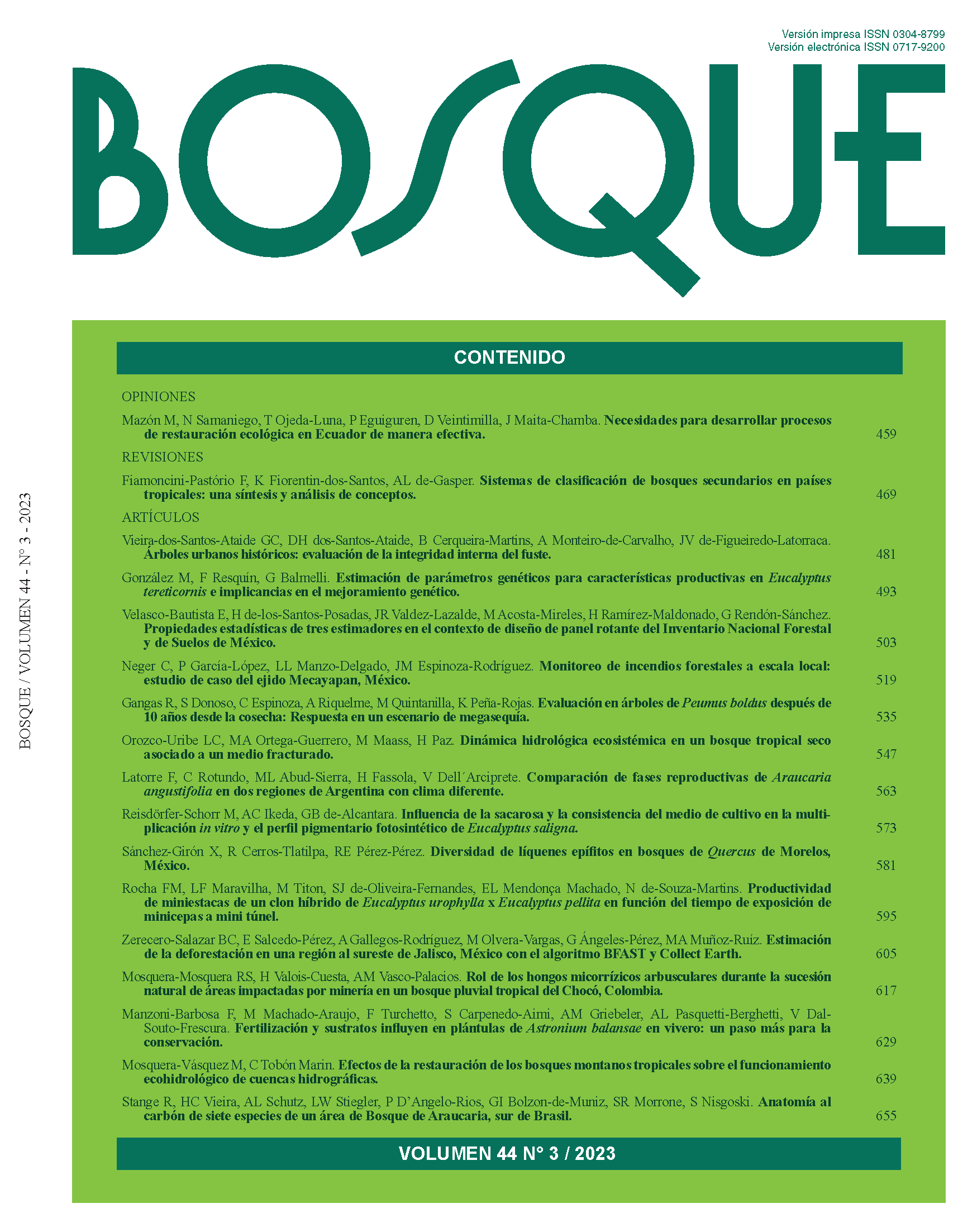Arbuscular mycorrhizal fungi dynamics during natural succession in mining-impacted areas of a tropical rainforest in Chocó, Colombia
Main Article Content
Abstract
Soils impacted by mining undergo significant alterations that affect their revegetation potential. One important alteration is the reduction of key microbial symbionts, such as arbuscular mycorrhizal fungi (AMF), which have the capacity to facilitate soil revegetation through symbiotic relationships with plants. This study aimed to assess changes in the AMF community composition during the natural succession of mining-impacted areas in Condoto, Chocó, Colombia. Researchers selected three mines abandoned for 5, 15, and 30 years, along with a natural reference forest. Soil samples were collected to evaluate fertility and quantify AMF spore populations, and fine root samples of three woody species were collected to quantify AMF colonization, including number of hyphae, vesicles, and arbuscules. The successional sites exhibited acidic and nutrient-poor soils. Fifteen AMF morphotypes were identified, with Acaulospora and Glomus being the most abundant genera. However, the diversity and composition of morphotypes, as well as the abundance of hyphae, vesicles, and arbuscules in roots did not differ significantly between treatments. The presence of AMF in early stages of mine abandonment suggests a potential role in expediting natural revegetation. However gaining a deeper understanding of the role played by this edaphic biotic community in mine restoration will require future research that examines the specific interactions between AMF species and plants in this unique environment throughout the natural succession process.

